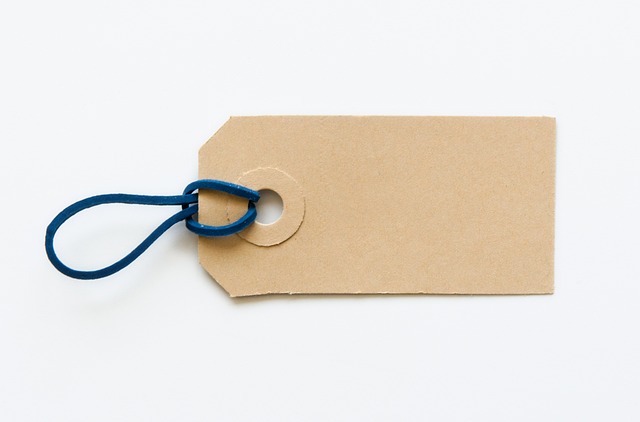Skin tags, benign growths caused by friction, range from a few mm to half a cm and can be removed through various methods. Traditional approaches like excision and lancing carry risks of scarring and infection, prompting interest in alternative, non-surgical Bristol Tag Removal techniques. Modern methods include laser treatments and cryotherapy, offering minimal downtime and immediate results. At-home remedies like duct tape and salicylic acid are available but vary in effectiveness; persistent cases require professional removal. Consulting a doctor is recommended for personalized guidance on suitable Bristol Tag Removal methods based on individual health and skin type.
Skin tags, those tiny, harmless growths on the skin, are a common concern. This article explores various removal techniques, from traditional Bristol tag removal methods like cutting or burning, to modern non-surgical approaches such as freezing and laser treatments. We also delve into at-home remedy options for mild cases and provide guidance on when to consult a medical professional. Understanding these methods can help you make an informed decision about achieving smooth, tag-free skin.
- Understanding Skin Tags: Causes and Types
- Traditional Bristol Tag Removal Methods
- Modern Non-Surgical Approaches
- At-Home Remedy Options for Mild Cases
- When to Consult a Medical Professional
Understanding Skin Tags: Causes and Types
Skin tags, also known as acrochordons, are small, soft, benign growths that typically appear on the neck, armpits, and groin area. They can vary in size, from a few millimeters to half a centimeter, and often look like little bumps or pieces of skin hanging off. Understanding their causes is an essential first step in considering removal techniques, especially when exploring options like Bristol Tag Removal.
These tags are usually caused by friction or trauma to the skin, such as chafing from clothing or repeated rubbing against a surface. They can also be linked to certain genetic factors and hormonal changes. Different types include skin tags that hang freely and those that are attached at one end, with a small stalk-like appearance. Recognizing these variations is crucial when deciding on the most suitable removal method for individual cases.
Traditional Bristol Tag Removal Methods
In the traditional approach to Bristol tag removal, medical professionals often employ surgical methods. A common technique involves excising the skin tag with a scalpel, ensuring a clean and precise cut to minimize scarring. This straightforward method is effective for smaller tags and provides immediate relief. Another traditional method is lancing, where a small needle or lance is used to puncture the tag, allowing it to fall off naturally over time.
While these traditional Bristol tag removal methods have been practiced for years, they may not be suitable for everyone. Each technique carries risks of scarring, infection, and bleeding, especially if not performed by a skilled medical professional. As a result, many people are now exploring alternative, less invasive options to avoid potential complications associated with traditional methods.
Modern Non-Surgical Approaches
In recent years, there has been a significant shift towards modern, non-surgical approaches for skin tag removal, offering safer and more convenient options for those seeking to get rid of these small, hanging pieces of skin. One notable method gaining popularity is the Bristol Tag Removal technique, which uses advanced technologies like laser treatments or cryotherapy to target and eliminate skin tags without incisions.
These non-surgical methods are preferred by many due to their minimal downtime, reduced risk of infection, and immediate results. Cryotherapy, for instance, involves freezing the skin tag with liquid nitrogen, causing it to shrivel and fall off within a few days. Laser treatments, on the other hand, use precise light energy to destroy the skin tag tissue, leaving no scars and promoting faster healing compared to traditional surgical excision.
At-Home Remedy Options for Mild Cases
For those dealing with mild skin tag concerns, there are several at-home remedy options to consider for effective Bristol tag removal. One popular choice is using duct tape, which involves applying a piece of duct tape over the skin tag and leaving it for several days. This process helps lift and remove the tag by cutting off its blood supply. Another simple method is salicylic acid, commonly found in over-the-counter acne treatments. By gently rubbing the skin tag with a cotton ball soaked in salicylic acid, you can help dissolve the skin’s upper layers, eventually shedding the tag.
Additionally, using warm water and gentle soap to regularly clean and exfoliate the area can promote cell turnover and potentially reduce the appearance of small skin tags. While these at-home remedies are mild, it’s important to note that results may vary, and for more persistent or uncomfortable cases, seeking professional Bristol tag removal services is recommended.
When to Consult a Medical Professional
Skin tags, though usually harmless, can sometimes cause discomfort or become irritated, especially if they are in friction-prone areas like the neck or armpits. If you’re considering Bristol Tag Removal, it’s wise to consult a medical professional for several reasons. They can provide expert advice tailored to your specific case, ensuring that any removal method is suitable and safe for your skin type and overall health. Moreover, a doctor can offer guidance on when a tag might require removal, such as if it becomes painful, changes color or texture, or shows signs of infection—all indicators that may warrant professional intervention.
In conclusion, skin tags are a common concern, but with various removal techniques available, including traditional Bristol tag removal methods and modern non-surgical approaches, there’s an option for everyone. For mild cases, at-home remedies can be effective, but if your skin tags cause discomfort or cosmetic concerns, consulting a medical professional is advised. Remember, the right method depends on the type and severity of your skin tags, so choose wisely to achieve the best results.
